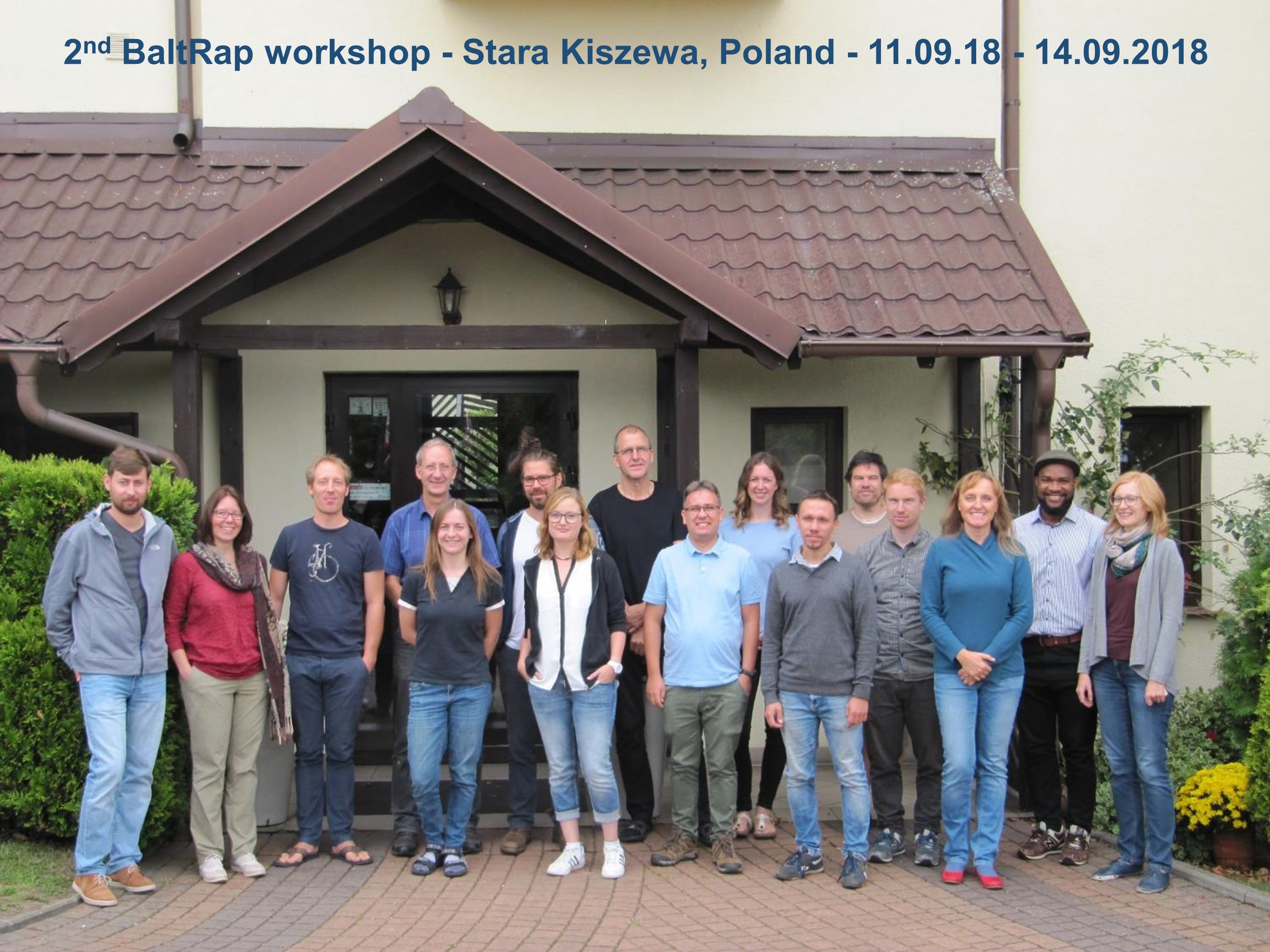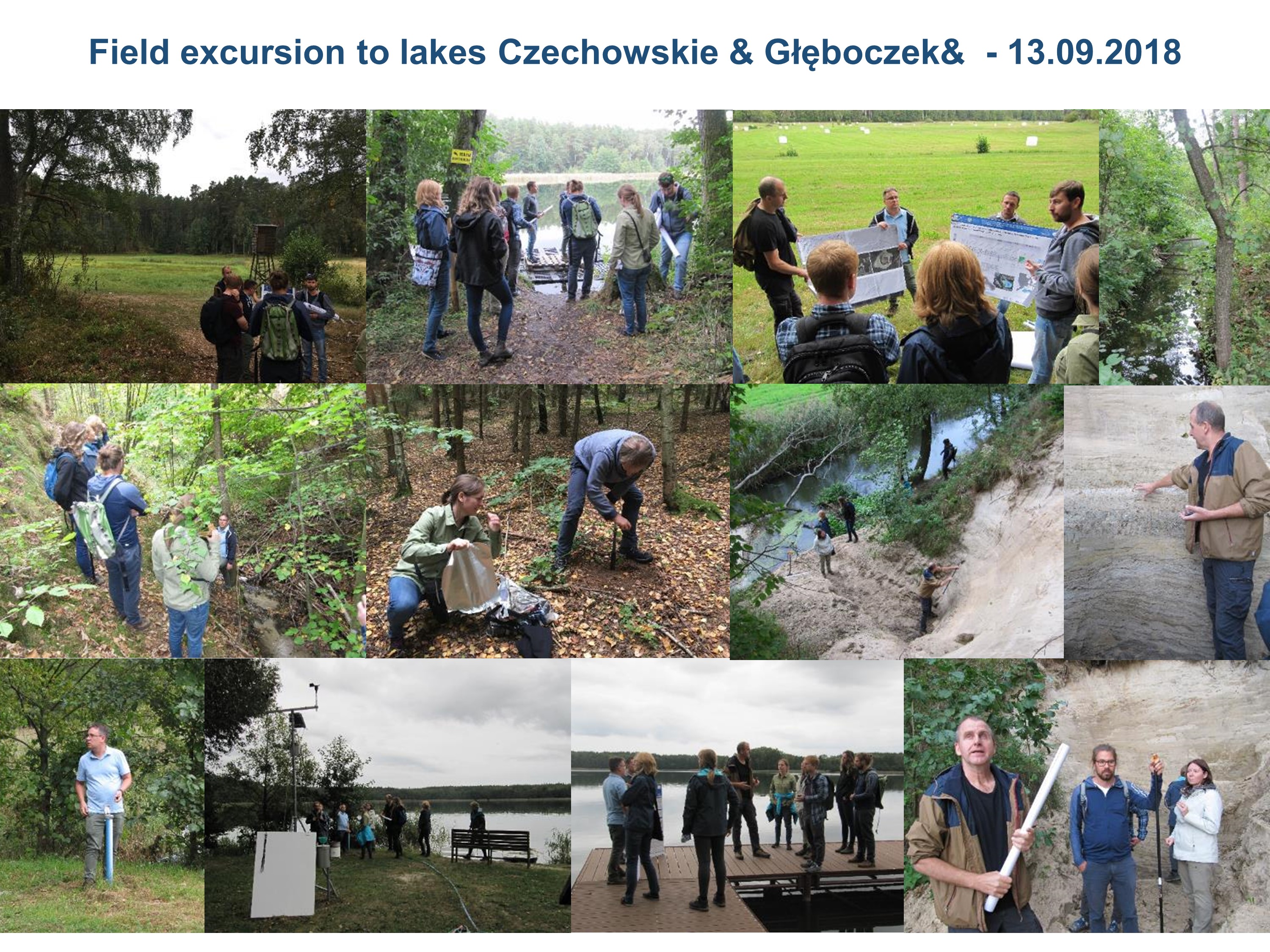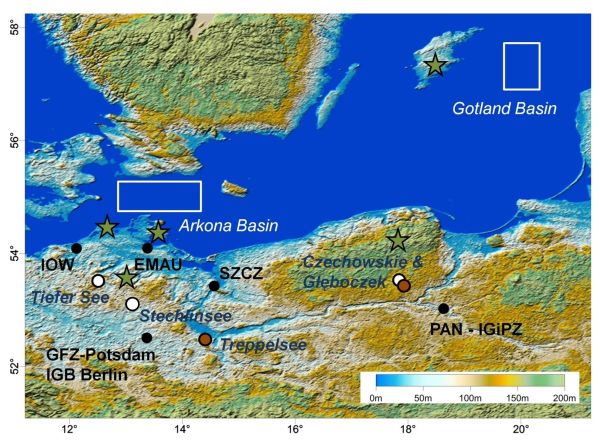
“BaltRap“: The Baltic Sea and its southern Lowlands: proxy – environment interactions in times of Rapid change
Introduction
The national BaltRap network, based at the Leibniz Institute for Baltic Sea Research Warnemünde (IOW), is a project funded in the frame of the Leibniz Competition 2017. BaltRap aims to comprehensively understand the impact of rapid climate change in the southern Baltic Sea region during the Holocene by integrating high-resolution marine (sediments) and terrestrial (lake sediments and tree rings) proxy archives. The network is based on a very close interdisciplinary collaboration between scientists from IOW, the Leibniz-Institute of Freshwater Ecology and Inland Fisheries (IGB), the University of Greifswald (EMAU), and the Helmholtz-Zentrum Potsdam Deutsches GeoForschungsZentrum (GFZ). BaltRap represents an adequate platform to provide a better understanding of the variable sensitivities and response times of the coupled marine-terrestrial system to the combined effects of long term and rapid climate change, and human impact.
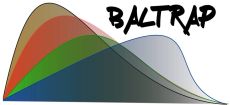
Contact
Dr. Jérôme Kaiser
Project Coordinator
jerome.kaiser@io-warnemuende.de
Main investigators
Helge Arz, Olaf Dellwig and Jérôme Kaiser, Leibniz Institute for Baltic Sea Research Warnemünde (IOW), Rostock-Warnemünde, Germany
Achim Brauer, Helmholtz Centre Potsdam GFZ German Research Centre for Geosciences, Potsdam, Germany
Martin Wilmking and Martin Theuerkauf, University of Greifswald (EMAU), Greifswald, Germany
Michael Hupfer, Leibniz-Institute of Freshwater Ecology and Inland Fisheries (IGB), Berlin, Germany
Partners
Andrzej Witkowski, University of Szczecin, Szczecin, Poland
Miroslaw Błaszkiewicz, Polish Academy of Sciences (PAN – IGiPZ), Torun, Poland
Karl-Uwe Heußner, Deutsches Archäologisches Institut (DAI), Berlin, Germany
Latest news
- Markus Czymzik and a team involving Achim Brauer, Markus Schwab, Brian Brademann (GFZ Potsdam), and Hendrik Mück (IOW), just turned back from a successful coring campaign (6.-14.8.2019) on Lake Kälksjön in central Sweden. The lake sediments are varved since its isolation from the ancient Lake Vänern (ca. 9200 yr BP). The aim of Markus' project is to compare Lake Kälksjön sediments with those of Lake Tiefer See, Lake Czechowskie and the Baltic Sea using a 10Be-based synchronization.
- Martin Theuerkauf and co-authors published a Review paper in Quaternary (https://www.mdpi.com/2571-550X/2/3/23) involving 4 working groups of BaltRap. Very nice !
- Mario Trouiller quitted our project and started a new one on July 1st. Good luck with your new project !
- On February 21st Tobias and the tree ring group published a very nice paper in Scientific Reports (https://www.nature.com/articles/s41598-019-39040-5), which had a strong media response (https://www.uni-greifswald.de/universitaet/information/aktuelles/detail/n/trockensommer-wie-2018-waren-im-mittelalter-keine-seltenheit-42883/;
https://www.spektrum.de/news/der-duerre-sommer-2018-war-nicht-ungewoehnlich/1627190; https://idw-online.de/en/news711107). Congratulations Tobias !
- The 3rd and last BaltRap workshop will be a symposium that will be held at the IOW very likely in the beginning of 2020.
- In spring 2019 there will be two coring campaigns organized by the GFZ team, one to Lake Tiefer See, and one to a swedish lake in the frame of Markus' project.
- From December 1st to December 13th 2018 an expedition in the central Baltic Sea on board the RV Elisabeth Mann Borgese (expedition EMB201) took place in the frame of the BaltRap project. 7 out of the 11 scientists on board were related to the BaltRap network (Patricia Roeser, Anna Wittenborn, Mirek Błaszkiewicz, Achim Brauer, Olaf Dellwig, Helge Arz, and Jerome Kaiser). Although the weather conditions were rather stormy, we could sample our main working areas (Gotland Basin, Farö Basin, Landsort Deep, Norrköping Basin) using a CTD-rosette, a pump-CTD-rosette, and a 400 L giant water sampler for the water columnn and a multicorer and a gravity corer for the sediments. These samples will be partly analysed in the frame of the BaltRap project.
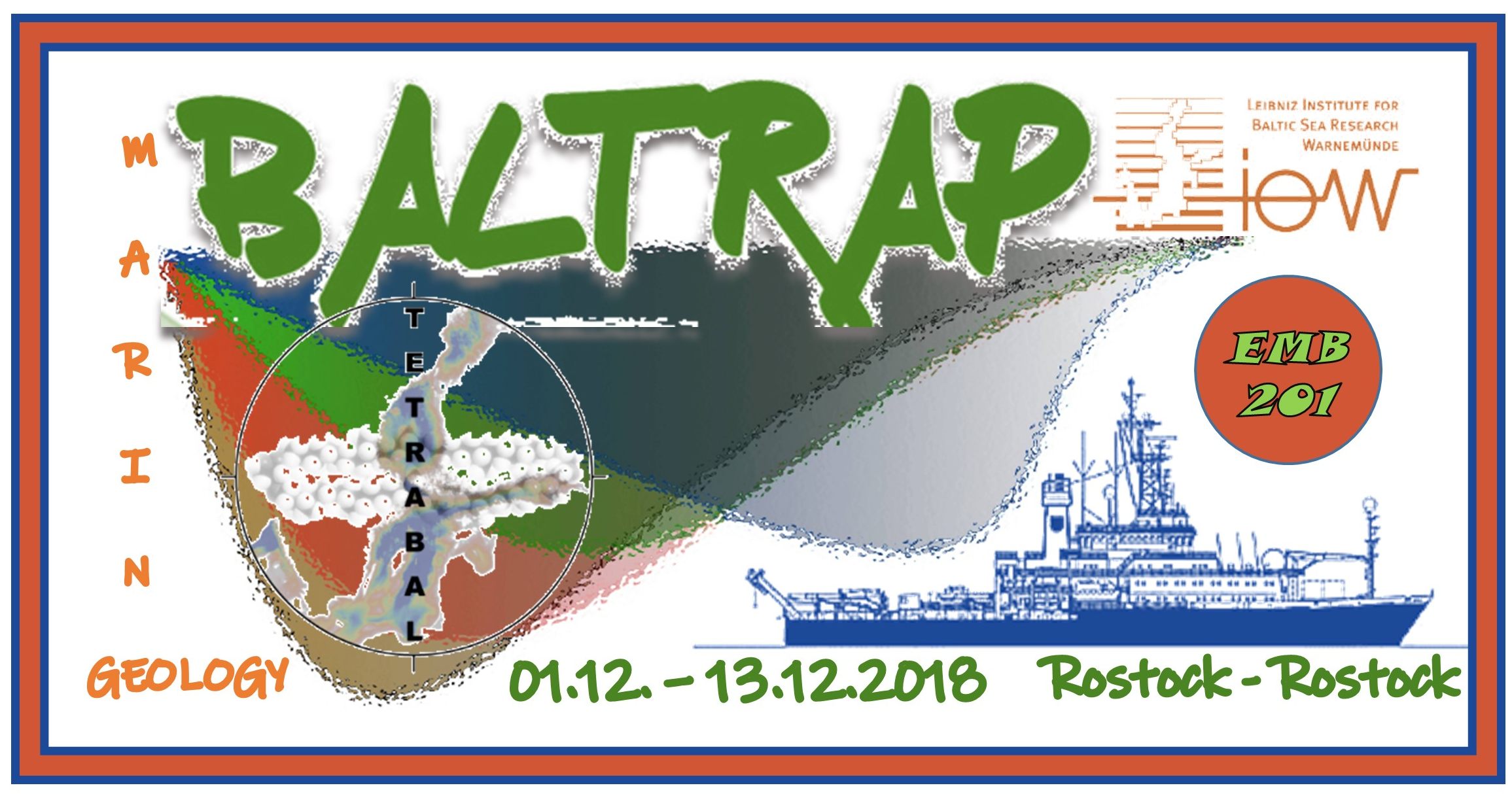
- We had a very nice and productive 2nd BaltRap workshop held at at the "Wrota Kaszub" hotel in Stara Kiszewa (Poland) between September 11th and 14th. We were 15 participants. We had very stimulating pesentations and discussions, as well as a very interesting excursion organized by Mirek Błaszkiewicz and his colleagues around the lakes Głęboczek and Czechowskie. This workshop marked the transition between the first phase of the BaltRap network project dedicated to proxy development, calibration and validation, and the second phase of BaltRap, which focuses rather on the elaboration of Holocene environmental records and their synchronization. A week before the workshop, the GFZ team took a new sediment core from Lake Głęboczek for Christin's work.
- Some changes occurred in the BaltRap network. Annika Tietjens decided to stop her PhD position. Patricia Roeser took over with a 2 years postdoc position at the IOW, which started in September 2018. Patricia is specialized in inorganic geochemistry of lake sediments, and she will mainly concentrate on Tiefer See lake sediments. Jill Harvey (University of Greifswald) was awarded a 2 years Alexander von Humboldt Fellowship. Her new project "Plant-climate resilience to extreme climate events: Intersections of time, space and proxies" is tightly related to the BaltRap project, and she is very much looking forward to continue the collaboration with the BaltRap consortium. Mario Trouiller took over her BaltRap postdoc position since December 2018. Furthermore, two more persons got their own fellowships for research projects closely related to BaltRap. Markus Czymsik, who was already involved in the BaltRap project, got a 3 years DFG "own position" grant to work at the IOW. He will develop and install a laboratory to prepare sediment samples for 10Be analysis and work on sediments from a lake in western Sweden, the Baltic Sea, and the Black Sea. The aim of his work is to use 10Be as a synchronization tool. Ebuka Canisius Nwosu, who made his master thesis based on DNA analyses of Tiefer See lake sediments at the University of Potsdam, got a PhD fellowship to continue his very promising work at the GFZ-Potsdam. We are very happy to welcome these new persons and see that the BaltRap network is growing !
- The next BaltRap meeting will be held at at the "Wrota Kaszub" hotel in Stara Kiszewa (Poland) between the 11th and 14th of September 2018.
- On June 26-27 a short geophysical expedition (backscatter bathymetry and seismic) has been done on Lake Tiefer See by Peter Feldens, our colleague from the IOW, and some of us. The results are promising !
- The BaltRap kickoff meeting took place at the IOW on June 22-23 with 17 participants. After some short talks presenting the different work packages in details, we discussed on upcoming expeditions and established the main "red lines" to follow.
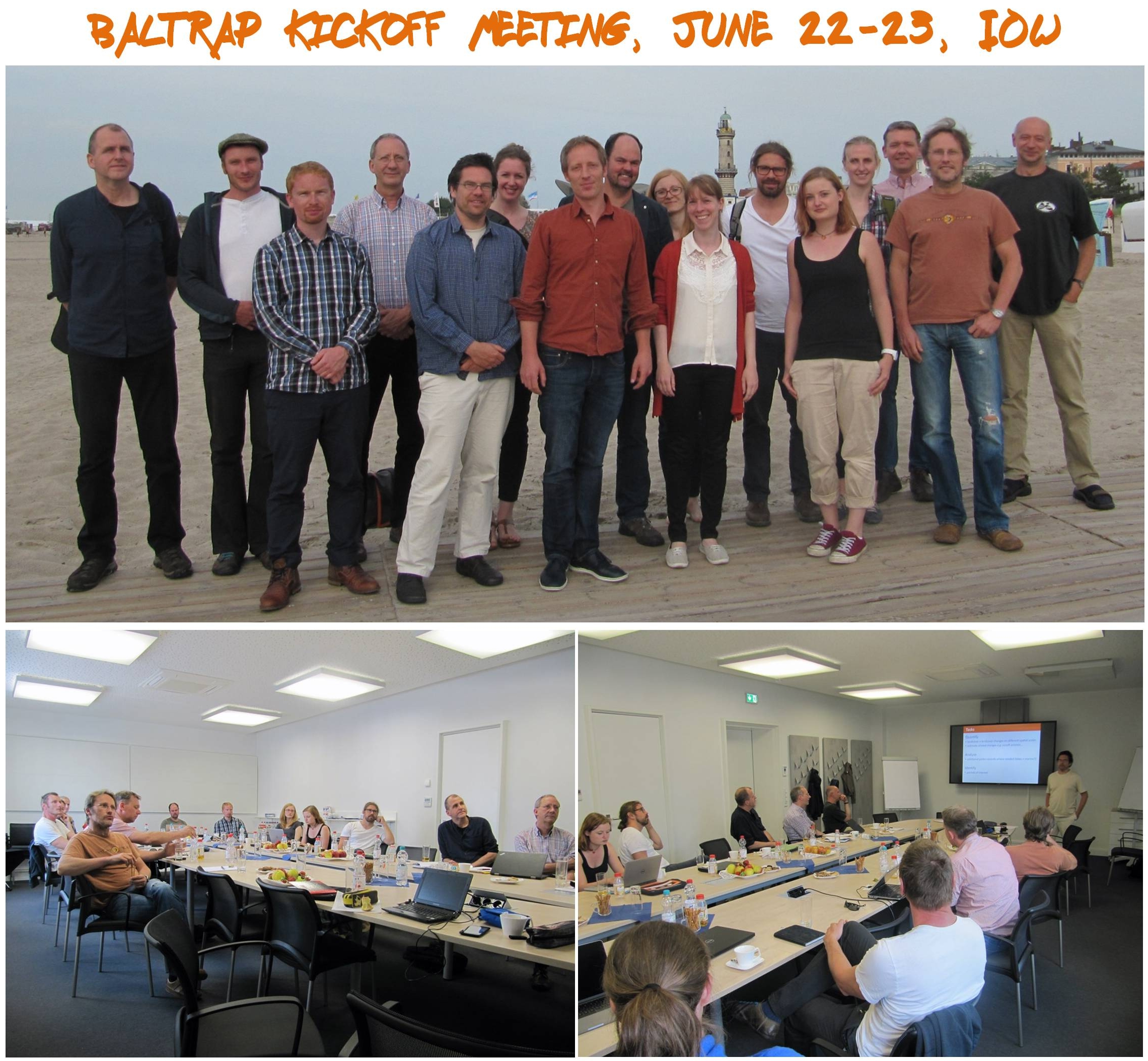
- We welcome Karolina Janecka, Finn Viehberg and Anna Wittenborn, who are not direct BaltRap members, but who have projects partly fitting into the BaltRap network. They are our "jokers". Karolina Janecka from Poland successfully applied for a DAAD-scholarship. She will start working at the EMAU with Martin Wilmking and Tobias Scharnweber from September on. Finn Viehberg is applying for a Heisenberg-fellowship based at the EMAU. Finn, who is still working at the University of Köln, is a specialist in microcrustaceans (Ostracods and Cladocerans). Anna Wittenborn just finished her master at the University of Göttingen. She will start working at the IOW from September on as a PhD student with Jérôme Kaiser in the frame of the TETRABAL DFG project.
- Markus Czymcik is employed as BaltRap postdoc fellow at the IOW and at the University of Lund (Sweden) for 6 months. His aim is to measure 10Be on sediment cores from the Baltic Sea and lakes as potential tool for synchronization.
- Jill Harvey from Canada is our "tree ring" postdoc fellow at the EMAU since the beginning of July. She just finished her PhD at the University of Victoria. She will work together with Martin Wilmking and Tobias Scharnweber. We wish her and her family a good acclimation to the life in Greifswald.
- We welcome 3 PhD students: Christin Lindemann, Annika Tietjens and Gregor Scholtysik. All three started on the 1st of May 2017.
- Christin is the PhD candidate at the GFZ-Potsdam. She studied geosciences at Potsdam University (2010-2017). She made her Master on the reconstruction of climate variability and human activity between 250 BC and 1020 AD using varved sediments from Lake Gleboczek (N Poland) at the GFZ with Achim Brauer.
- Annika is the PhD candidate at the IOW. She studied Geosciences at the CAU University in Kiel with specialisations in "Geochemie der Sedimente" and "Paläobiologie und Sedimentation". Her master thesis was about "Tracing water masses and continental input in the Labrador Sea with radiogenic Hf and Nd isotopes".
- Gregor is the PhD candidate at the IGB. He studied Applied Geosciences with specialisation Energy and Mineral Resources at the RWTH Aachen University (2010-2016). His studies focused mainly on oil and gas geology with a specialisation in organic geochemical analyses of organic matter.
- The kick-off meeting will take place at the IOW on 22-23 June 2017.
- Officially, our project started on the 1st of February 2017 and will end on the 31st of January 2020.
Goals of the WGL network “BaltRap”
The coupled marine-terrestrial system of the Baltic Sea and its southern lowlands is highly sensitive to both natural climate forcing and human impact. To comprehensively understand the impact of rapid climate change in the southern Baltic Sea region (SBSR) and to distinguish between natural and human forcing, our BaltRap network aims, for the first time, at integrating high-resolution marine (sediments) and terrestrial (lake sediments and tree rings) proxy archives. Considering the wide range of temporal and spatial scales involved in shaping system dynamics, we expect significant differences in the response time and magnitude of the considered environments. Beyond instrumental observations only a rigorous proxy development, testing, and application tailored to the different bio- and geo-archives based on precise and accurate chronologies will enable us to address the following main goals:
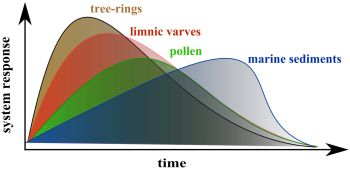
1. The comprehensive understanding of the environmental responses and response times of marine and terrestrial/limnic systems to gradual changes, major climatic transitions, and short-term climate oscillations during the Holocene
2. The integration and the precise synchronization of the various proxy records from brackish/marine and terrestrial/limnic systems in the SBSR to grasp the entire range of interactions between the Baltic Sea and its adjacent terrestrial systems
3. The distinction of natural variability from the increasing influence of human societies in the later Holocene (particularly in the last century) to better project 21st century dynamics
The geo-archive network – from proxy calibration to high resolution Holocene records
A prerequisite for the interpretation of proxy time series is a profound knowledge of the actual natural systems and the processes leading to proxy formation. While several paleoenvironmental proxies for e.g. temperature, precipitation, vegetation, productivity, and redox state exist in both brackish/marine and terrestrial/limnic systems, their functioning, mechanisms, and thresholds differ at local to regional scale, making quantification still a major challenge. Therefore, instrumental time series, archive monitoring, and a thorough proxy development are required to trace seasonal to decadal-scale responses of the brackish/marine and terrestrial/limnic environments to climate variability. In particular, we will compare existing instrumental time series of climate parameters with on-going monitoring protocols in all BaltRap archives (e.g. sediment and pollen traps, surface sediments from the Baltic Sea and lakes, dendrometers) to elucidate the formation, calibration, and application of complementary bio- and geo-based proxies. While Baltic Sea environmental time series covering the last decades are available at the IOW, the terrestrial monitoring part will build on ongoing lake and tree monitoring established by the Virtual Institute ICLEA (Integrated Climate and Landscape Evolution Analyses). Within our network initiative, partially laminated sediment records from two basins of the Baltic Sea (Arkona and Gotland) will be synthesized and evaluated in a concerted way with annually resolved (varved) lake sediment records in NE Germany and Poland, and seasonally resolved tree rings from subfossil and living wood material from the Baltic coast and its hinterland. On the terrestrial side, we envision to complement available ICLEA records (Lakes Tiefer See and Czechowskie) by two additional high-resolution records (Lakes Treppelsee and Głęboczek) in order to better differentiate regional from local influences. In addition, we will integrate early diagenetic process studies on sub-recent sediments from Lake Stechlin, where IGB has long environmental time series and a cutting-edge limnological infrastructure including several enclosures available for BaltRap. We also plan to complement existing records of subfossil tree-rings from the SBSR with wood preserved in lakes from NE Germany to follow the same marine-terrestrial comparison approach as with the sediment cores.
In a first step, we will use precisely dated short sediment and wood cores with an annual (lakes and tree-rings) to sub-decadal (deep baisns of the Baltic Sea) resolution to compare and calibrate the proxy records with instrumental data. This enables us in a second step to extend the paleoenvironmental reconstructions beyond the instrumental period at high temporal resolution (annual to multi-decadal timescale) to the entire period of industrialization (currently under debate as the “Anthropocene”), and beyond. Building on recent assessments of climate change in the Baltic region, we aim to extend the climatic reconstructions to the SW Baltic coast, so far a white spot on the maps. In a third step, we will investigate the amplitudes, durations and dynamics of past climate changes, as well as the impact of these climatic changes on both the marine and terrestrial environments during the Holocene. Special focus will be on the last two millennia to place the observed 20th century warming and ecosystem changes in a long term perspective and to link climate with human development during historic times (e.g. Roman Warm Period, Medieval Climate Anomaly, Little Ice Age). Furthermore, high-resolution proxy records from periods of warmer than present climate during the early- to mid Holocene are of major interest as potential analogues for a warmer future climate. In addition, the transition from the warmer early to mid Holocene to the cooler late Holocene climate, driven by changes in Earth’s orbital parameters, enables to study long-term changes of the climate system and possible thresholds involved.
Work packages
WP1: Baltic Sea sediments
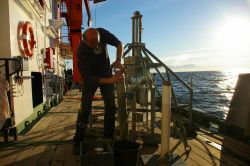
In order to reconstruct the close interactions between climate change, anthropogenic disturbances, and redox conditions in the Baltic Sea, inorganic and organic proxies will be studied for different intervals of the Holocene at a decadal to centennial timescale. Changes in humidity and runoff will be estimated with proxies related to sea surface salinity and to the input of material with a terrestrial (soil) origin, while the variability of redox states will be identified by trace metal proxies. Furthermore, recently developed organic proxies may allow reconstructing water and air temperature changes. The combined application of these proxies on lake archives may provide a unique tool for the synchronization of the marine and limnic records.
H.W. Arz (IOW), O. Dellwig (IOW), J. Kaiser (IOW), 1 PhD student (IOW), M. Moros (IOW), T. Leipe (IOW), A. Witkowski (University of Szczecin)
WP2: Holocene annually laminated lake records
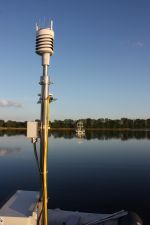
The main aim of WP 2 is to provide precisely dated multi-proxy records at annual to seasonal resolution along a W-E transect from NE Germany to Poland for reconstructing both long-term climatic trends and short-term oscillations and their environmental responses. A central aspect is the search for regional gradients, which are expected due to the decreasing influence of the North Atlantic towards the East. Proxy data calibration will be fostered through lake monitoring and sediment trap analyses. WP2 builds on proxy records from lakes Tiefen See in NE Germany and Czechowskie in N Poland currently established within ICLEA and complements these by two new sites (Lakes Treppelsee and Głęboczek). A precise synchronization of these records will be based on tephrochronology. The ultimate goal is to jointly analyse and evaluate the information from the terrestrial and marine sites to achieve a comprehensive understanding of the marine-terrestrial coupling.
A. Brauer (GFZ), 1 PhD student (GFZ), M. Schwab (GFZ), R. Tjallingii (GFZ), B. Plessen (GFZ), M. Błaszkiewicz (PAN – IGiPZ)
WP3: Sedimentary proxy formation during early diagenesis
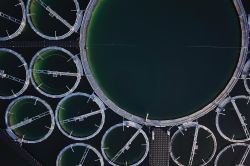
WP3 focuses on the role of redox-driven processes at the sediment-water interface for the generation and modification of proxies during early diagenesis. Over the past 150 years, changes in land use, climate variability and industrialization have altered dissolved and particulate matter transport from the terrestrial catchment into the basins. WP3 studies, whether and how these changes relate to the intensity of redox processes and subsequent signal formation. By means of long-term monitoring over decades and historical records, the significance of proxies can be validated. Additionally, sedimentary redox indicators (e.g. C, S, Fe, Mn, P) will be tested as potential geochemical proxies at suitable sites with well documented changes of lake water quality. The main goal is to refine the multi-proxy approach for the reconstruction of changes in lacustrine and marine systems during the last 12,000 years.
M. Hupfer (IGB), 1 PhD student (IGB), T. Goldhammer (IGB), J. Gelbrecht (IGB), P. Kasprzak (IGB), A. Witkowski (University of Szczecin)
WP4: Tree ring based high-resolution paleoclimatic reconstructions
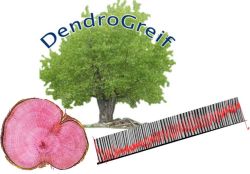
To decipher spatiotemporal variability of climatic drivers such as the North Atlantic Oscillation throughout the recent Holocene, regional and temporally highly resolved paleoclimatic reconstructions are necessary. These are largely missing for the SBSR. Climatic variability in the past had a strong influence on the state of the Baltic Sea. Past warmer and dryer periods (early to mid-Holocene, Medieval climate anomaly) led to increased salinity via reduced freshwater runoff, and high accumulation of organic carbon which in turn intensified hypoxia and favored lamination of sediments [20]. The main goals are thus to i) use new and available tree ring proxies to provide regionally resolved paleoclimatic reconstructions by combining temperature (pine) and precipitation sensitive (beech & oak) tree ring proxies and to ii) tease apart the relative influence of climate versus man on these terrestrial archives in order to iii) better understand past climatic variability and the response times of terrestrial systems to rapid climate and environmental change.
M. Wilmking (EMAU), 1 PhD student (EMAU), T. Scharnweber (EMAU), E. van der Maaten (EMAU), K.-U. Heußner (DAI)
WP5: Vegetation change in the southern Baltic Sea region – and how it particularly affected the Baltic Sea
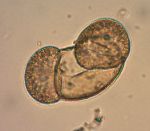
During the mid to late Holocene, climate and human activity influenced vegetation. Changes in vegetation itself affected various parameters of the land surface, including biophysical (e.g. albedo and surface temperature), hydrological (surface runoff and ground water formation) and sedimentological parameters (erosion). Our main goal is to assess the timing and detailed pattern of vegetation change to separate direct from indirect effects of climate change and human activity on lake environments and particularly the Baltic Sea.
M. Theuerkauf (EMAU), H. Joosten (EMAU), M. Błaszkiewicz (PAN–IGiPZ)
Structure of the network
The national BaltRap network will allow linking the brackish/marine paleoenvironmental research based in the Marine Geology Department at the IOW, not only with the biogeochemical lake research at the IGB, but also with leading groups working in the fields of terrestrial/lacustrine paleoecology and paleoclimatology of the southern lowlands of the Baltic Sea region (GFZ, EMAU, SZCZ, PAN-IGiPZ, DAI). Only such a closely interlinked terrestrial-marine research network will allow for an in-depth study of the complex environmental response patterns of the SBSR to rapid Holocene climate change. As the IOW does for the Baltic Sea basins and the IGB for lakes, our cooperation partners host exceptional geological and environmental sample archives for the terrestrial realm. They have further access to observational data from ongoing monitoring programs (e.g., the GFZ-coordinated NE German observatory TERENO) and possess specific analytical capacities needed for lake and terrestrial paleoecology research.
Regular joint workshops during the entire period of the project and joint field campaigns in the Baltic Sea and at the lake sites will guarantee the envisaged synergies and knowledge transfer within the network. Moreover, a comprehensive paleoenvironmental proxy development and application will help to bridge the considerably different geo-archives. Shared PhD-supervisions and mutual visits between the partners will escort the project. WPs 2, 4 and 5 already demonstrated very successful cooperation within the ICLEA network.
The BaltRap structure with five WPs is designed to facilitate a tight scientific interaction including data exchange and joint interpretation. WP1 (IOW) and WP 2 (GFZ) provide complementary proxy analyses with biomarkers, trace metal, and micro-facies analyses for Baltic Sea and lake records. The study of early diagenetic processes and the development of new proxies within WP3 (IGB) will provide new paleoenvironmental information and a better understanding of the proxy data produced within WP1 and WP2. Tree ring records of WP 4 (EMAU) will provide absolute dates to the integration of sedimentological/geochemical proxies and vegetation reconstruction at defined time intervals, while WP5 (EMAU) will allow the evaluation of high-frequency variability during the last centuries by archive comparison.
Publications related to the BaltRap project
Dellwig, O., Schnetger, B., Meyer, D., Pollehne, F., Häusler, K., Arz, H.W. (2018) Impact of the Major Baltic Inflow in 2014 on Manganese Cycling in the Gotland Deep (Baltic Sea). Frontiers in Marine Science 5, 248.
Czymzik, M., Muscheler, R., Adolphi, F., Mekhaldi, F., Dräger, N., Ott, F., Słowinski, M., Błaszkiewicz, M., Aldahan, A., Possnert, G., Brauer, A. (2018) Synchronizing 10Be in two varved lake sediment records to IntCal13 14C during three grand solar minima. Climate of the Past 14, 687-696.
Theuerkauf, M. and Couwenberg, J. (2018) ROPES Reveals Past Land Cover and PPEs From Single Pollen Records. Front. Earth Sci. 6:14. doi: 10.3389/feart.2018.00014.
Wilmking, M., Scharnweber, T., van der Maaten-Theunissen, M., van der Maaten, E. (2017) Reconciling the community with a concept—The uniformitarian principle in the dendro-sciences. Dendrochronologia 44, 211–214.
Kaiser J., Arz H.W. (2016) Sources of sedimentary biomarkers and proxies with potential paleoenvironmental significance for the Baltic Sea. Continental Shelf Research 122, 102-119.
Kleeberg A., Herzog C., Hupfer M. (2013) Redox sensitivity of iron in phosphorus binding does not impede lake restoration. Water Res. 47, 1491-1502.
Kleeberg A., Herzog C., Jordan S., Hupfer M. (2010) What drives the evolution of the sedimentary phosphorus cycle?. Limnologica 40, 102-113.
Noordmann J., Weyer S., Montoya-Pino C., Dellwig O., Neubert N., Eckert S., Paetzel, M., Böttcher M.E. (2015) Uranium and molybdenum isotope systematics in modern euxinic basins: Case studies from the central Baltic Sea and the Kyllaren fjord (Norway). Chem. Geol. 396, 182-195.
Ott F., Wulf S., Serb J., Słowiński M., Obremska M., Błaszkiewicz M., Brauer A. (2016) Constraining the time span between the Early Holocene Hässeldalen and Askja-S Tephras through varve counting in the Lake Czechowskie sediment record, Poland. J. Quat. Sci. 31, 103-113.
Scharnweber T., Manthey M., Wilmking M. (2013) Differential radial growth patterns between beech (Fagus sylvatica L.) and oak (Quercus robur L.) on periodically waterlogged soils. Tree Physiology 33, 425-437.
Theuerkauf M., Bos J.A.A., Jahns S., Janke W., Kuparinen A. et al. (2014) Corylus expansion and persistent openness in the early Holocene vegetation of northern central Europe. Quat. Sci. Rev. 90,183-198.
Wulf S., Dräger N., Ott F., Serb J., Appelt O., Gudmundsdottir E., van den Bogaard C., Słowinski M., Błaszkiewicz M., Brauer A. (2016). Holocene tephrostratigraphy of varved sediment records from Lakes Tiefer See (NE Germany) and Czechowskie (N Poland). Quat. Sci. Rev. 132, 1-14.
